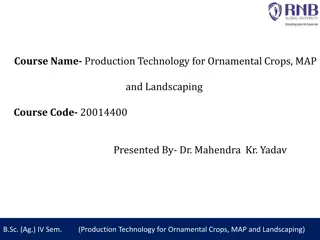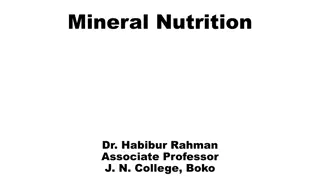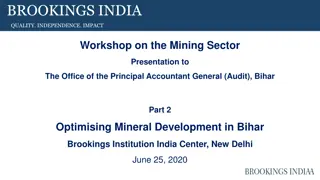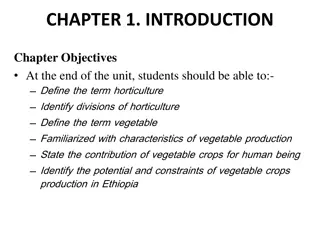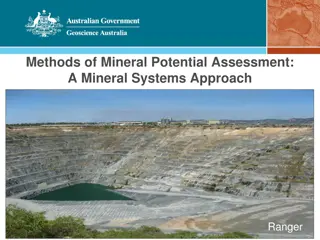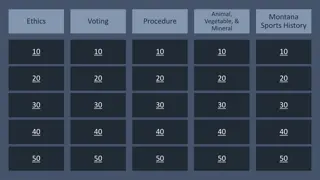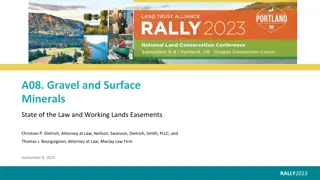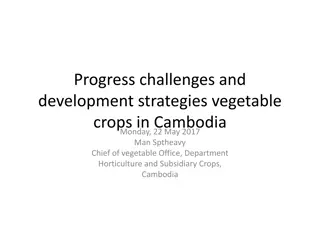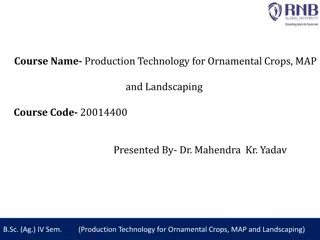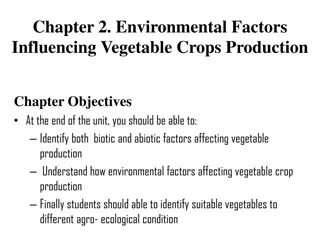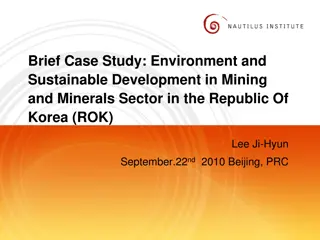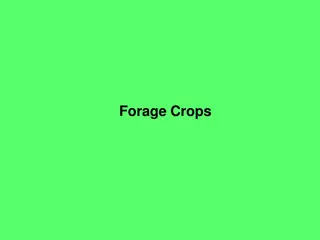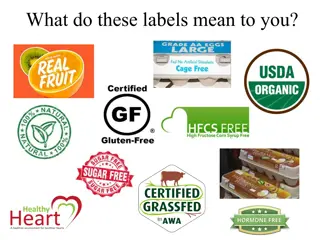Potential Impacts of Fingerboards Mineral Sands Mine on Vegetable Crops and Businesses
Retired Economic Development Officer highlights concerns over potential contamination of vegetable crops with dust from the Fingerboards Mineral Sands Mine, leading to rejection by supermarkets and significant financial losses for growers. The officer questions the adequacy of Environmental Effects Studies in measuring dust impact, emphasizing the risks to agricultural businesses and the broader community.
Download Presentation

Please find below an Image/Link to download the presentation.
The content on the website is provided AS IS for your information and personal use only. It may not be sold, licensed, or shared on other websites without obtaining consent from the author. Download presentation by click this link. If you encounter any issues during the download, it is possible that the publisher has removed the file from their server.
E N D
Presentation Transcript
Mining Impacts of Fingerboards Mineral SandsMine
Who am I Retired Senior Economic Development Officer Wellington Shire Presentation supporting RAAF Base East Sale Redevelopment inHansard Previously Development Officer dealing with businesses and communities and reporting weekly to Minister for Regional Development John Brumby. Member of NSW Premiers Task Force for Western NSW (Regional Coordination Management Group)
IF THE FINGERBOARDS MINE PROCEEDS IT IS FORSEEABLE THAT: Vegetable crops will be contaminated with dust from stockpiles Contaminated vegetables will be rejected by supermarkets Growers will not be paid and will also bear transport costs Growers will suffer, thousands, hundreds of thousands and millions of dollars in losses and costs These businesses will sue Kalbar, its Directors and Executives The government and those who authorised the mine will also be sued
ITS NOT ROCKET SCIENCE Opencut mining and stockpiles will generate dust to be blown over crops, Lindenow and the Bairnsdale water storage There have been television documentaries illustrating the dust issues. Wind can vary from breeze to gale leading to variations in distance and quantity of dust carried and deposited. I question whether the EES has adequately measured the quantity and distance of dust that would be carried. There are 365 days in a year over 72000 days in the 20 year mine life It s not a question of if but how often crops, rooftops and water will be contaminated
Joining the dots A head of lettuce takes 65 to 120 days from planting to harvest Broccoli 48 to 115 days, cauliflower 55 to 100, cabbage 70 to 120 days The dust migrates into the plant during its growth When vegetables are delivered in store a sample is selected for evaluation. If there is contamination in the sample, the whole shipment is rejected When this happens several times, the supply contract is terminated
From the Environmental Study Non Compliance costs Non-compliance with a certification scheme, through a failed audit or repeated product rejection by major retailers (e.g. foreign bodies or contaminants), could prevent producers from supplying particular lines of produce or lose their status as an approved supplier (Woolworths, Coles, IGA). The latter would render a producer unable to supply anyproduce line at all. The market power of the major retail chains in Australia is concentrated and competition to supply vegetables to local and export markets is strong. A loss of food safety accreditation would likely result in an instant loss of sales and seriouslyaffect businesses that rely on large scale sales to a small number of dominantcustomers. Domestic wholesale markets would also be unable to accept produce without a minimum level of food safety accreditation and/or if the quality of the produce has beencompromised (appearance, taste, shelf life).
Flow on impacts Growers employ hundreds of workers to plant, weed, water, harvest and process vegetables. ALL OF THESE JOBS ARE AT RISK. Downstream there are transport businesses and drivers that will suffer when contracts are terminated. Vegco One Harvest, will also be impacted by contaminated supply and will be forced to change supply and processing to Queensland. Dozens of local workers will lose their jobs Suppliers to all of these businesses will also suffer reduced income
Detail lacking Kalbar s response has been We will talk to the affected farmers Talk does not pay the bills or the wages of sacked workers So much of what Kalbar proposes lacks detailed written: Assessment of likely impacts under all scenarios Commitments of automatic financial compensation in the likely event of crop contamination Commitmentsof automatic compensation to other businesses and individuals
CONSULTATION IS NOT CONSENT A recent successful appeal over the approval for a windfarm was upheld, because the windfarm proponent failed to secure agreement from 100% of the affected properties. The two property owners who did not give written consent had their rights upheld. It is not enough for Kalbar to say surrounding farms (names and details redacted) have been consulted. SHOW US IN WRITING WHERE THEY HAVE AGREED TO HAVE THEIR HOMES AND BUSINESSES BEING CONTAMINATED .
By contrast - Proper consultation As SENIOR ECONOMIC DEVELOPMENT OFFICER with Wellington Shire Council I consulted with farmers in the shire. Focus groups were consulted to identify issues Every farmer in the shire was posted reply paid surveys to further identify, quantify and validate their issues. The significant number of responses were analysed and tabulated
Proper consultation Results were tabulated to guarantee privacy and reported to Council Meetings with large groups of farmers were facilitated and results properly written up. A detailed report was written that identified issues that were relevant to Council and to other levels of government.
Going through the motions Kalbar s responses to serious concerns such as impact on regional and grower reputation has been disingenuous. For Kalbar or their consultants to state that a grower (who remains unnamed) indicated that the dust would wash off the vegetables without indicating which grower said that and what percentage of growers believed that, raises the question of whether this person actually exists. Not responding to Food and Fibre Gippsland s concerns about reputational and brand damage similarly avoids the issues
From the Environmental Effects Study RISK MATRIX Likelihood Rare Unlikely Possible Likely Almost certain Negligible Very low Very low Very low Low Moderate Minor Very low Low Low Moderate Moderate Consequence Moderate Low Low Moderate High High Major Low Moderate High Major Major Extreme Moderate High Major Major Major
Local business and worker impact Contamination of crops is ALMOST CERTAIN Impact is MAJOR or CATASTROPHIC Rejection of produce Loss ofcontracts Loss of jobs Farm bankruptcy Downstream losses in transport and processing with further impacts in support industries THIS IS A RED FLAG ON THE RISK MATRIX. MORE WILL BE LOST THAN POTENTIALLY GAINED.
In the EES Hamilton SierraCon (2020; pg 24) and BAEconomics (2020; pg 20) stated Agriculture Victoria estimates the local farmgate value of production as around $120 million per annum. Media and others in the industry estimate production at $155 million at farm gate. Processing, and Transport would clearly add to that figure and involve hundreds of additional jobs.
The risk is too high Our Prime Minister recently stated on television that Hotel Quarantine is 99.9% effective and working fine Yet look at the recent shut down. Even .1% leakage has huge impacts. Kalbar s assertion that incidents would of dust contamination would be infrequent is similar to this.
And then there is uranium I have recently become aware that Uranium and Thorium are significant portions of Kalbar s planned product mix. Uranium is water soluble. Consider therefore the potential for water and crop contamination
Radioactive Contamination IT IS FORSEEABLE THAT BAIRNSDALE WATER SUPPLY 3.5 km from the mine WILL BE CONTAMINATED WITH RADIOACTIVE MINERALS Given the variability of wind strength it is inevitable that the East Gippsland Water Storage Woodglen Reservoir will be contaminated with dust from the mine and stockpile over the 20 year mine life. Uranium is water soluble and has a long half life Increasing concentrations of radioactive minerals will accumulate I for one will not be drinking East Gippsland Water supplied from that reservoir.
Perception is everything A certain level of radiation may be considered safe BUT NO-ONE WANTS TO DRINK IT OR EAT IT. It would only take 1 science student with a Geiger counter and a video capable smart phone In the supermarket to Ruin all vegetable growers in the Lindenow Valley. At the reservoir to Erode public confidence in the watersupply An audible reading would make national news Such publicity if the reading was high would lead to a ROYAL COMMISSION.
Water contamination Having grossly misrepresented the amount of water required, Kalbar has now proposed use of a centrifuge to save water Remembering that uranium is soluble in water consider the increasing concentration of contamination that will accrue in the tailings dam. How will these tailings be kept safe or disposed of??? Can we trust Kalbar or whoever they sell the mine to, to maintain safety standards Uranium as a mineral, or a sulphate is very toxic
As a Development Officer with Regional Development Victoria, I would prepare weekly Briefing Papers for forwarding to Minister for Regional Development John Brumby Several of those Briefs were about the toxic Tailings leaking into the Tambo Valley, Tambo River and Gippsland Lakes from a closed gold mine at Benambra. The government spent millions cleaning up and capping that tailings dam Every time there is an East Coast Low and the Kalbar tailings dams overflow, the gullies will run with mine tailing sediments and contaminate the Mitchell River. The media are sure to include this aspect in their stories and feature the impact on the Gippsland lakes.
Water It is foreseeable that there will be droughts during the 20 year life of the mine! When farmers cant irrigate and the town is on water restrictions, how will the mine keep the stockpiles moist to limit dust blowing onto crops, town and water storage???? The five meter reduction in bore levels predicted in the EES will devastate irrigation farmers, increasing pumping costs andimpacting on water supply reliability.
IN CLOSING IT IS FORSEEABLE THAT THE MINE S OPERATION WILL LEAD TO A DECLINING WATER TABLE. (Up to 5 metres in the EES) IT IS ALSO FORSEEABLE THAT THE MITCHELL RIVER AND GIPPSLAND LAKES WILL BE CONTAMINATED. IT IS UP TO KALBAR TO PROVE THAT THE MINE WILL NOT DAMAGE THE ENVIRONMENT, BUSINESSES AND COMMUNITIES. THEY HAVE NOT DONE THAT.




